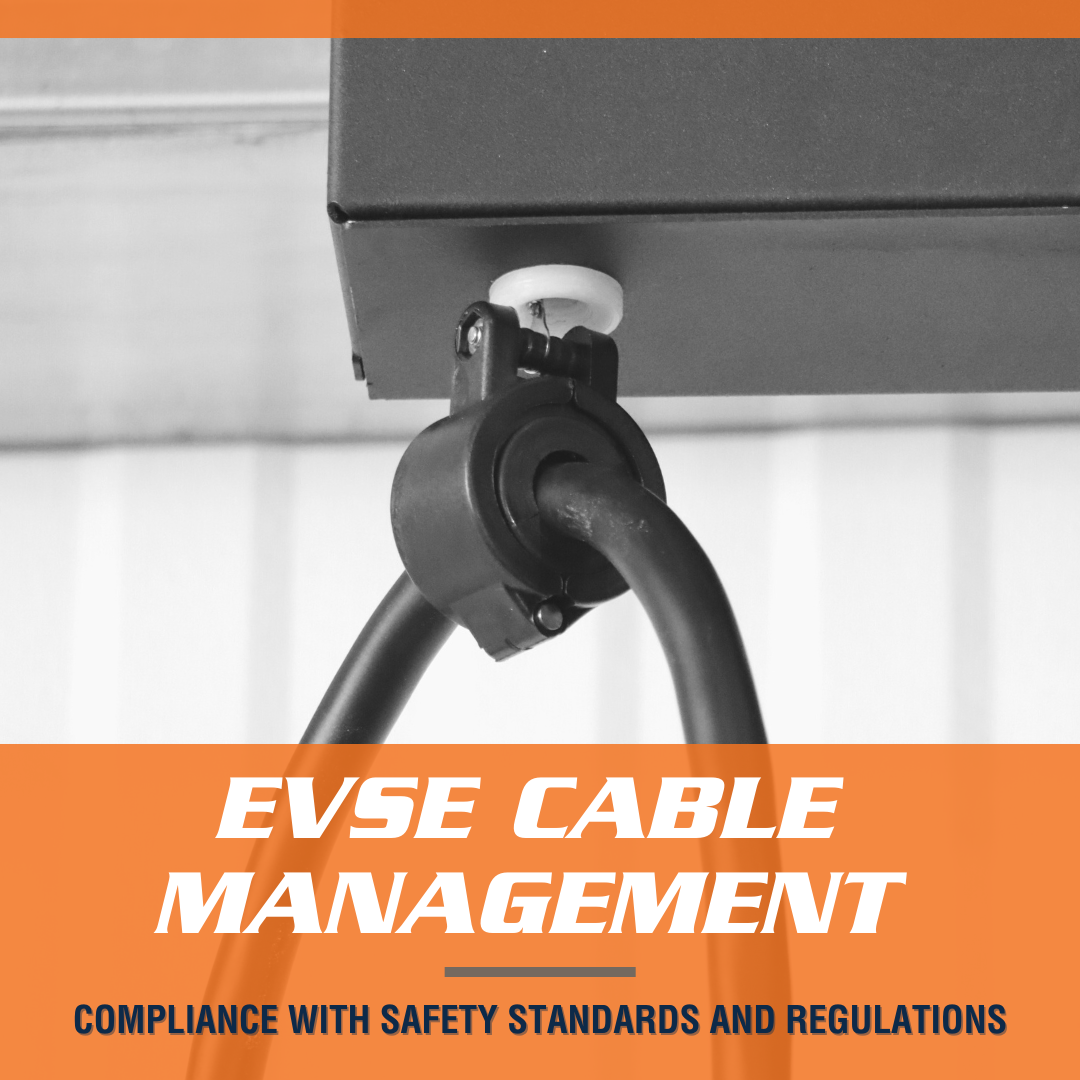We use cookies to make your experience better. To comply with the new e-Privacy directive, we need to ask for your consent to set the cookies. Learn more.
EVSE Cable Management: Compliance With Safety Standards and Regulations
Next time a vehicle in your fleet ages out of usefulness, there’s a decent chance the replacement will run on battery power. One estimate holds that the value of the global market for commercial electric vehicles (EVs) will grow at a compound annual growth rate of over 25% through 2027. That’s a near quadrupling from a value of over $67 billion in 2021 to nearly $259 billion the latter year. In other words, there will be a lot more commercial EVs on the streets soon—and some of them may belong to your organization. 
This growth is pushing fleet managers into planning mode. Commercial EVs require commercial infrastructure: Yards, depots, maintenance agreements. Most importantly, they require charging stations. And charging stations require charging cables.
Charging cables are an essential piece of electric vehicle supply equipment (EVSE), and deserve as much planning and consideration as chargers and charger stands. But where can you go for technical specifications about how to safely incorporate EV charging cables into your fleet facilities? In other words, what do fleet managers need to know about EVSE cable management? Keep reading for a few options.
Existing Standards for EVSE Cable Management
Clear, widely available safety standards governed the last generation of electric industrial vehicles in the U.S. Between the National Electric Code® (NEC), the American National Standards Institute (ANSI), and the Occupational Safety and Health Administration (OSHA), there’s no shortage of standards governing electric forklift charging equipment.
Today’s electric vehicles are different. New OSHA regulations on EVSE cable management haven’t been announced, let alone published. For now, fleet managers are left combing through a handful of technical standards for the few brief details about charger cables. That said, here are the top standards to consult for guidance on managing EVSE cables:
1. NEC Article 625
The National Fire Protection Association (NFPA) provides guidance for EVSE cable management in Article 625 of publication NFPA 70®, better known as the NEC. Specifically, planners of EV charging stations should consult Part II, Section 625.17 (B) and (C) for information about EV charging cables.
While section B describes the types of charging cables that are safe for EVSE, section C makes an important point about cable management: When charging cables are more than 25 feet (7.5 meters), the code says, owners must provide a cable management system.
Cable management systems for EVSE include EV charger cable retractors, which automatically retract cables. That keeps cables and users safe, while offering convenient access when it’s time to charge your commercial EV.
2. CSA C22.2 No. 280-2022: Electric Vehicle Supply Equipment
While this standard bears the brand of Canadian standardization association CSA Group, it’s actually a multinational collaboration between CSA and two other organizations: the Association of Standardization and Certification (ANCE) and Underwriters Laboratories, Inc. (UL).
This publication provides technical standards for EVSE cables rated for up to 125 volts (AC) and 16 amps. Unfortunately, we’re not sure what it says about cable management. For full details, fleet managers will have to purchase this paywalled standard. At publication time, the latest electronic edition was available from the ANSI webstore for $525.
3. IEC 61851-1: Electric Vehicle Conductive Charging System - Part 1: General Requirements
Here’s another international standard, this one from the International Electrotechnical Commission (IEC). It’s just one of IEC’s group of standards for EVs and electric industrial trucks—but this one clearly covers EVSE cable management.
Again, this code is only available to paying customers. It’s also protected by copyright, so we can’t tell you exactly what IEC 61851-1 says about managing EV charger cables. See the document’s Chapter 11, Section 7 for information about “cable management and storage means for cables assemblies.” As we publish, this standard is available for purchase from the IHS Markit Standards Store for $387, print or electronic.
Given that IEC 61851-1 also includes a section about “strain relief” for EV charger cables, it would be surprising if it didn’t recommend some form of EV cable management system. Along with what we know from the NEC, then, the safest option for any EV charging station is to include such a system.
We recommend EV Charger Cable Retractors from BHS, Inc. These cable reels include an enclosed EV charging cable protector and are suitable for indoor/outdoor use. Choose between wall-mounted and stand-mounted models—or consider EV Charger Pedestal and Cable Management Kits for a full-service charger-mounting solution.
Learn more about EVSE infrastructure from BHS by calling us at 1.800.BHS.9500.
